Organizations today rely on SaaS products more than ever to keep their processes moving, enhance work efficiency, and maintain their position over competitors. On the other hand, modern enterprises struggle to handle many SaaS subscriptions, monitor their usage, and reduce costs. More employees using applications in the cloud have resulted in shadow IT with hidden software purchases and multiple subscriptions that waste department resources. At this point, having the best saas management software is very important for the organization.
A good SaaS management platform acts as a central system that allows users to see all the software in use within an organization. As a result, these advanced tools assist IT administrators, procurement groups, and financial managers in watching how applications are used, controlling who can use them, allocating licenses for maximum benefit, and ensuring everything follows security rules. Strong SaaS management solutions enable companies to remove duplicate subscriptions, improve their contract deals, automate the renewal process, and closely control their software collection. Using the right management tools for strategy helps a business achieve efficient operations, save money, and improve results as the market relies more on software.
What is SaaS Management Software?
SaaS management software is created to handle all the oversight and control necessary for an organization’s different Software-as-a-Service applications. They act as a single location to display information from multiple places, including financial software, ID systems, and individual applications, to give an overview of how the software is used and the status of compliance. Sophisticated SaaS tools count on artificial intelligence and machine learning to study how applications are used, estimate renewals, and recommend ways applications can be used better.
What starts as tracking inventory on these platforms can also include workflow automation, security monitoring, and money management services. The systems develop harmonious management environments by easily working with single sign-on, HR, and ERP tools from an organization’s IT foundation. With top-notch SaaS management tools, companies can structure their software use around efficiency, low costs, support for strategy, and security compliance.
Why Do We Need Best SaaS Management Software?
- Cost Control: Managing SaaS solutions properly allows companies to spot unneeded subscriptions, unused licenses, and unnecessary tools that make their expenses rise.
- Security Enhancement: The use of modern SaaS management software enhances a company’s security by tracking apps in use, detecting unauthorized software installations, and ensuring compliance with established security practices.
- Operational Efficiency: Properly managing SaaS applications lets you reduce administrative efforts by allowing software to automatically add users, provide licenses, and remove access.
- Compliance Assurance: Full-fledged management platforms guarantee following industry rules, protecting data, and respecting internal rules by saving detailed records, supervising who sees the data, and enforcing standard approval methods.
- Planning and Decision Making: Information from expert management software makes it possible to decide on the right software choices, partners, and plans for technology development.
- Dealing with Suppliers: Managing contracts from one platform gives us access to all vendor metrics, contract terms analysis, and updated renewal deadlines when negotiating.
Key Features of Best SaaS Management Software
- Application Discovery: Certain tools can instantly and automatically find and classify all the SaaS apps in your network, which includes shadow IT setups that could threaten security.
- License Optimization: The use of advanced optimization tools allows analysis of how applications are used, user activities, and features to discover licensing, consolidation, and cost-saving opportunities.
- Automated Workflows: Using automation, routine activities such as setting up users, administering access, routing authorization, and compliance checks are made easier through setup workflows that match a company’s requirements.
- Financial Analytics: In-depth insights about spend, budget usage, terms of contracts, and trends in costs for a range of software can be seen in the comprehensive reporting and analytics tools.
- Security Monitoring: By checking application access, user actions, and security risks, real-time monitoring helps maintain strong security.
- Integration Capabilities: SaaS platforms for management can collaborate with common enterprise tools such as identity systems, human resource software, financial applications, and instant messaging systems.
What Makes a Good Best SaaS Management Software?
- Scalability: Strong SaaS management tools are built to deal with growth in the company, new applications, and added users.
- User Experience: Adoption and how well a platform operates rely greatly on how simple its interfaces and user experience are. Good saas management software has simple and organized dashboards, straightforward ways of navigating, and advanced search tools.
- Data Accuracy: Building such software is enabled by being able to collect, analyze, and generate reports. Leading platforms rely on different approval systems, live updates, and thorough process controls to ensure all data in all applications and departments is correct, complete, and timely.
- Vendor Support: Good vendor support services, including explanation of the platform, training, tech support, and strategy help, play a major role in both increasing the platform’s success and achieving excellent outcomes for the organization.
- Customization Options: Being able to customize the platform makes it fit a company’s structure and ways of working while still offering key core features.
- Return on an investment: A proven investment profit through cost reduction, enhanced efficiency and risk decrease proves the worth of the platform and explains why it needs ongoing support.
Comparison Table for Best SaaS Management Software
| Platform | Rating | Competitive Advantage |
| Zylo | 4.8/5 | AI-powered predictive insights and comprehensive automation capabilities |
| Zluri | 4.8/5 | Extensive 800+ integrations with advanced identity governance features |
| Airbase | 4.8/5 | Integrated expense management with global reimbursement capabilities |
| Lumos | 4.8/5 | Self-service access requests with comprehensive identity governance |
| Productiv | 4.6/5 | Advanced AI analytics with renewal forecasting and usage optimization |
| Vendr | 4.6/5 | Premium intelligence platform with real-time negotiation support |
| Torii | 4.5/5 | Open API architecture with flexible developer integration options |
| BetterCloud | 4.4/5 | Streamlined operations management with automated administrative tasks |
| SailPoint | 4.4/5 | Enterprise-grade identity security with automated role modeling |
Best SaaS Management Software
1. Zylo

Type: Enterprise SaaSOps Platform
Rating: 4.8 out of 5 stars
Website: www.zylo.com
With AI and predictive analytics, Zylo leads in helping companies transform how they handle their software portfolios using an enterprise-focused SaaSOps platform. It gives organizations an important solution to manage SaaS inventory, maximize license use, and manage renewals, so they can watch over their software assets.
Zylo’s engine assesses many data points to provide useful information about the use of applications, spending trends, and future renewals, which helps IT and operations teams choose actions to save money and improve how the organization runs. Beyond basic SaaS tracking, its approach involves using automation, prediction, and planning to help achieve long-term goals for a company’s growth.
Key Features:
- AI-powered predictive analytics
- Centralized SaaS inventory management
- Automated license optimization workflows
- Comprehensive renewal tracking system
- Advanced security risk scoring
Pros:
- Sophisticated AI capabilities
- Comprehensive automation features
- Excellent predictive insights
Cons:
- Custom pricing only
- Enterprise-focused complexity
- Steep learning curve
Pricing: Custom pricing available
2. Zluri
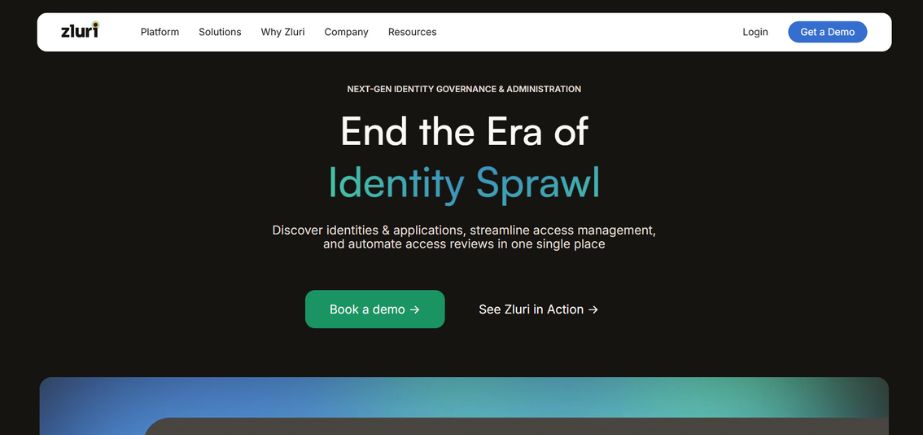
Type: Cloud-based SaaSOps Platform
Rating: 4.8 out of 5 stars
Website: www.zluri.com
Zluri is notable because it is an effective cloud platform built especially for enterprises that value heightened security and can’t do without extensive integration. Because the platform has over 800 integrations for more than 250,000 applications, it is an excellent choice for corporations that handle complex software.
By using artificial intelligence, Zluri can automate security, manage access, and compliance monitoring in various parts of an organization. Thanks to no-code workflow builders, organizations can simplify automation processes, and the platform’s use of AI for forecasting provides clear estimates of their license capital expenditures that guide them in setting a budget and how to allocate resources.
Key Features:
- 800+ application integrations
- AI-powered identity governance automation
- No-code workflow builders
- Comprehensive access review systems
- Advanced compliance monitoring tools
Pros:
- Extensive integration network
- Advanced automation capabilities
- Strong security features
Cons:
- Custom pricing structure
- Complex implementation requirements
- Resource-intensive setup process
Pricing: US$15k/base per year
3. Vendr

Type: SaaS Procurement Platform
Rating: 4.6 out of 5 stars
Website: www.vendr.com
Vendr offers complete handles on SaaS procurement, helping businesses simplify every step from requesting a product to renewing the contract. The system effectively arranges all procurement documents, automates task distribution, and creates warnings about upcoming contract dates and after periods.
Vendr’s Premium Intelligence helps organizations by providing a wealth of supplier data, reference points for price comparisons, and live guidance to help them secure the best contract terms. By linking to accounting, contract lifecycle management, human resources, and single sign-on, the platform helps run processes smoothly, prevents delays, and allows for thorough monitoring of both vendors and siting rules.
Key Features:
- End-to-end procurement management
- Premium intelligence platform
- AI-powered contract analysis
- Real-time negotiation support
- Comprehensive vendor documentation
Pros:
- Specialized procurement focus
- Extensive supplier intelligence
- Expert negotiation support
Cons:
- High enterprise pricing
- Procurement-specific limitations
- Complex pricing structure
Pricing: $40,000 – $140,000. per year
4. BetterCloud
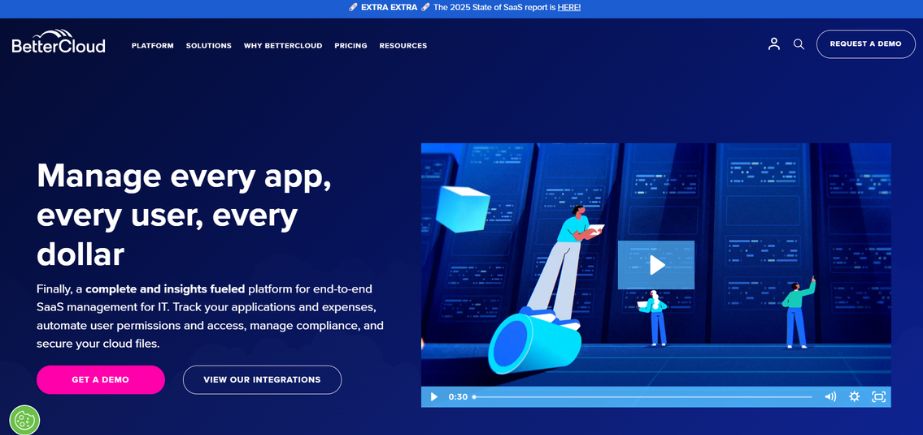
Type: SaaS Operations Management Platform
Rating: 4.4 out of 5 stars
Website: www.bettercloud.com
With BetterCloud, you can easily manage all your SaaS operations with application recognition, automatic administration of tasks, and close watch of any security issues. The platform tackles conventional IT management tasks throughout the entire software and user lifecycles, helping with combining licenses, identifying risks, and scanning data that requires special protection.
BetterCloud works best by collecting software onboarding, offboarding, and support tasks into one system, which also connects employee information from HR databases to manage access smoothly. The combination of these features helps the platform classify software, improve how it’s optimized, speed up problem-solving, and reduce tasks that workers must complete manually.
Key Features:
- Comprehensive application discovery
- Automated administrative task management
- Advanced security vulnerability monitoring
- HRIS integration capabilities
- Self-service support portals
Pros:
- Streamlined operations focus
- Strong automation features
- Comprehensive lifecycle management
Cons:
- Custom pricing only
- Complex feature set
- Integration complexity
Pricing: Customized pricing
Suggested blog: Best SaaS Accounting Software
5. Torii
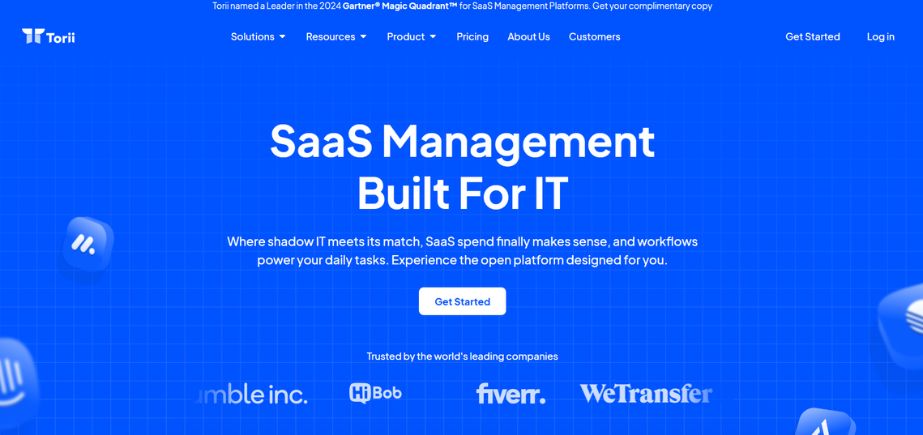
Type: Complete SaaS Management Platform
Rating: 4.5 out of 5 stars
Website: www.toriihq.com
Torii combines features for the detection of apps used in the cloud, monitoring service billing, automating user roles, and overseeing difficult processes. The platform is different because it has a flexible design and lots of customization options, together with an open API that invites developers to make their integrations and share them with others.
Using Torii, you can optimize costs by letting the system manage downgrades of licenses, remove unused applications, check cost levels against others in your field, and create unique saving ideas based on user habits. The platform supports SaaS development, which makes it valuable to companies wanting to organize application infrastructures easily and control them securely across different team requirements.
Key Features:
- Complete application lifecycle management
- Open API architecture
- Automated license optimization
- Flexible workflow automation
- Developer-friendly integration options
Pros:
- Flexible architecture design
- Strong developer features
- Comprehensive management capabilities
Cons:
- Custom pricing requirements
- Technical complexity
- Developer-focused approach
Pricing: $2.5/Employee/Month
6. Airbase
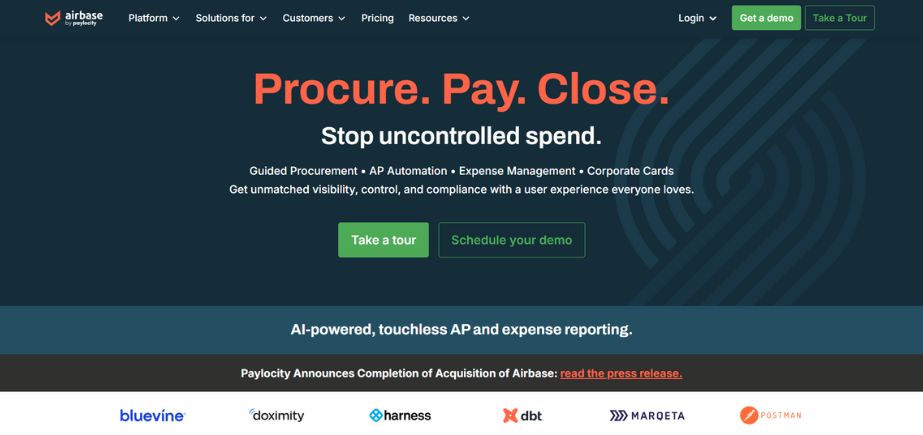
Type: Software Procurement and Expense Management
Rating: 4.8 out of 5 stars
Website: www.airbase.com
On Airbase, you can handle purchases and expense management in one place, and setting up centralized policies across all your teams is easy. Thanks to the platform, companies can customize how procurement approval is done for each department, type of software, and kind of request, all without having to learn coding. They connect easily with Slack and email, and the communication options inside the app help open the door to better teamwork.
Expense tracking and reimbursement can happen worldwide thanks to Airbase, which accepts expense receipts from 44 countries and 14 types of currency and uses mobile applications for instant and effortless submission of receipts. Thanks to this approach, Airbase is ideal for companies with teams working remotely and challenging purchasing needs who want simpler and more efficient financial management.
Key Features:
- Unified procurement and expense management
- Global multi-currency support
- Mobile receipt processing
- Custom approval workflows
- Integrated communication channels
Pros:
- Global operational capabilities
- Comprehensive financial features
- Mobile-friendly interface
Cons:
- Custom pricing structure
- Complex implementation requirements
- Feature complexity
Pricing: Custom pricing
7. Lumos

Type: SaaS Management and Operations Platform
Rating: 4.8 out of 5 stars
Website: www.lumos.com
Lumos is a SaaS management and operations platform that supports budget management improvements and speedier identity governance through broad integration and automated tools. Over 80 different systems can be connected through the platform, and API access helps ensure data is transferred smoothly among vendors, accounting, human resources, and security systems. Lumos helps firms detect shadow IT, produce in-depth reports on all business spending, and automatically manage software setup and removal by using advanced workflow technology.
The self-service feature in identity governance handles access requests while the support team automates reviews, bringing down IT help desk traffic and easing the management of support requests. Well-designed, security-focused approval steps for privileged access help organizations work smoothly and efficiently regardless of structure.
Key Features:
- Comprehensive identity governance automation
- Self-service access management
- Advanced workflow builders
- Multi-stage approval processes
- Extensive integration capabilities
Pros:
- Strong identity features
- Comprehensive automation
- Excellent integration support
Cons:
- Custom pricing model
- Implementation complexity
- Feature learning curve
Pricing: $40 to $180 per month
8. SailPoint
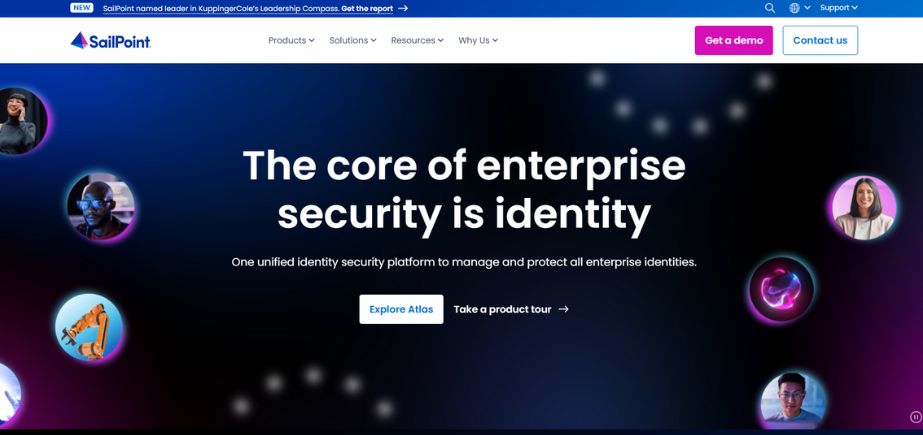
Type: Identity Security Platform
Rating: 4.4 out of 5 stars
Website: www.sailpoint.com
SailPoint is created for large organizations to manage both the workflow and the safety of software-filled IT systems. It is developed to manage user access quickly, bring technologies together without difficulty, and offer AI-based information about security for improved growth.
With the data from user access, SailPoint constructs software roles, manages rights for applications, uses analytics, points out security problems, and provides solutions. Complex access management and complete audits made possible by identity security on Xamarin make these industries appropriate clients for the platform.
Key Features:
- Enterprise-grade identity security
- Automated role modeling
- AI-powered security insights
- Comprehensive access controls
- Advanced compliance features
Pros:
- Strong security focus
- Enterprise-grade capabilities
- Advanced identity features
Cons:
- Custom pricing only
- Security-focused limitations
- Complex implementation
Pricing: $200,000 to $910,000 annually
9. Productiv
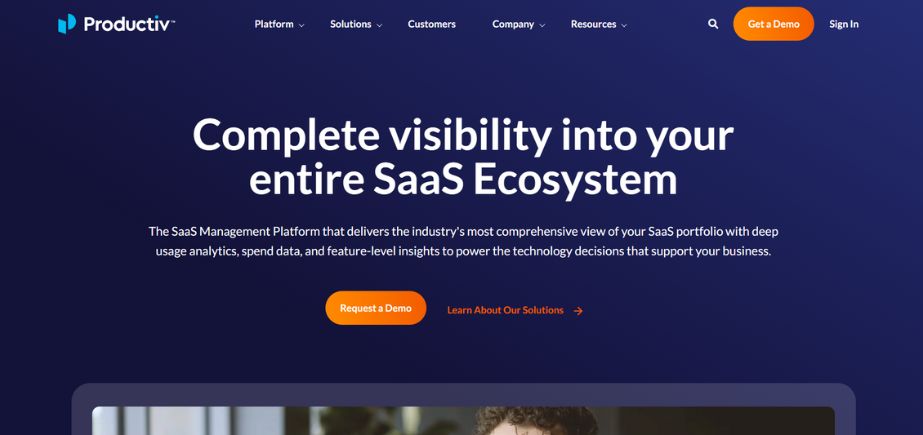
Type: Data Intelligence and Analytics Platform
Rating: 4.6 out of 5 stars
Website: www.productiv.com
Productiv is dedicated to smart data analytics and software spending, helping clients with AI to understand application usage, ensure compliance, control approval workflow, and forecast both usage levels and cost trends. This platform helps teams notice both hazards and opportunities throughout contract signing, renewing, daily use, and after purchasing.
The automated system from Productiv delivers useful tips and warnings using data on usage and budgeting to help prevent duplicate licenses, dangerous spending decisions, and estimate licenses, ensure policy compliance, and identify trends in negotiations. Thanks to this approach, these tools are especially in demand by organizations that use data to help them organize and plan their use of software better.
Key Features:
- AI-powered usage analytics
- Comprehensive renewal forecasting
- Automated optimization recommendations
- Advanced compliance tracking
- Predictive licensing insights
Pros:
- Strong analytics capabilities
- AI-powered recommendations
- Comprehensive forecasting
Cons:
- Custom pricing structure
- Analytics-focused approach
- Implementation requirements
Pricing: Custom pricing
Tips for Choosing the Best SaaS Management Software
- Assessment Requirements: Evaluate the company’s structure, find out what SaaS challenges exist, take stock of the software in use, note what users need, and understand strategic plans before assessing options.
- Integration Compatibility: Check how well a platform can work together with your current systems for identity management, employees, finance, and communication.
- Scalability Planning: Look for platforms that will support your organization’s future growth, help you build a wider set of apps, and meet the needs of more users, all without influencing the system’s efficiency.
- Security Standards: Select platforms that show strong security processes, follow required regulations, and safeguard data as needed by the organization and by the law.
- Vendor Evaluation: Make sure to evaluate the reputation of vendors, how well their support is, what plans they have for the future, and their financial stability to help the platform advance as needed for the company.
- Return Investment: Estimate the potential benefits of the choice through better cost management, optimized work, and fewer risks to support platform investment and measure the platform’s achievements.
Conclusion
Today, choosing and using effective SaaS management software is required by businesses facing more complicated software workloads. SaaS management platforms help today’s enterprises turn disorganized application portfolios into efficient, budget-friendly operations that safeguard important data and meet all relevant regulations. Because of these tools, organizations can remove redundant software packages, use licenses wisely, carry out routine tasks automatically, and obtain a detailed view of their software investments with the help of predictive analysis.
Frequently Asked Questions
1. What is the primary purpose of SaaS management software?
The purpose of this software is to help companies manage, keep track of, and adjust their SaaS applications all from one location.
2. How do SaaS management platforms help reduce costs?
SaaS management platforms minimize costs by detecting extra subscriptions, matching the number of licenses to how the software is being used, canceling upgrades for users who are inactive, and sharing details for contract renewals.
3. What integration capabilities should I look for in SaaS management software?
Essential integration is achieved by connecting to identity providers for managing users, human resource systems for automated onboarding, financial tools to monitor cost data, security solutions for checking compliance, and workflow messaging systems to notify users.
4. How do these platforms improve security and compliance?
SaaS management tools help strengthen security by always checking who accesses applications, reviewing access automatically, applying risk scores, and notifying in real time when suspicious activity is detected.
5. What factors determine the ROI of SaaS management software implementation?
ROI factors are lower monthly costs due to fewer subscriptions, fewer tasks for admins, better outcomes when negotiating, improved safety, faster compliance, and better business operations.

